NinjaTek is the high-quality filament brand behind NinjaFlex, Cheetah, Armadillo, and more. Read on to learn all about NinjaTek’s filaments!
The Martial Arts of 3D Printing
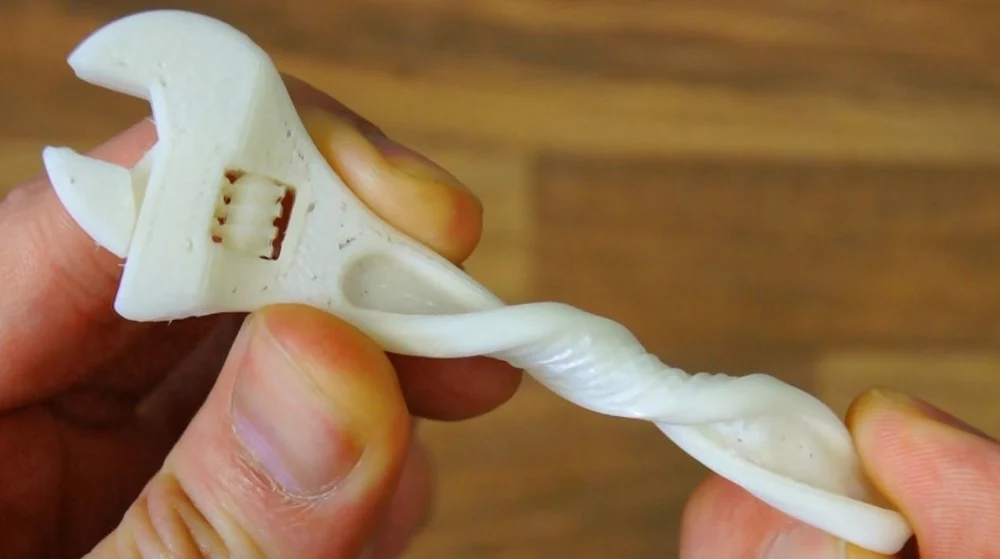
If you’re devoted to printing flexible filaments, you’ve probably heard of NinjaTek, a filament manufacturer that specializes in making high-quality flexible filaments. NinjaTek is a brand of Fenner Drives, a company with over 50 years of experience in manufacturing.
NinjaTek focuses on materials that are capable of being used in an industrial setting or have a special, real-world application. Their filament can get pretty expensive as it’s professional-grade, but they do have benefits.
NinjaTek’s high-performance filaments are all made of thermoplastic polyurethane (TPU), a rubber-like material that’s highly resistant to abrasion, impact, and chemicals. Most TPU filaments are noticeably flexible, but they don’t have to be. They can range from very flexible to stiff and sturdy.
Shore Hardness
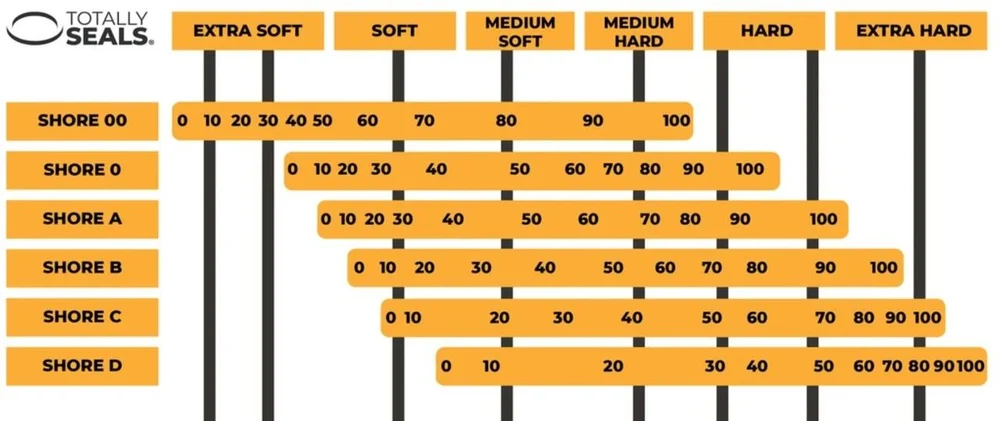
Manufacturers of flexible filament often use Shore hardness to classify the flexibility of their products. Shore hardness is a measure of the hardness of a flexible material, and the scale is both alphabetical (A through D) and numerical (0-100). The lower the letter in the alphabet and the lower the number, the softer and more flexible the material is; the higher the letter and number, the harder and more inflexible the material.
NinjaTek’s Assortment
NinjaTek offers four of their own filaments, each with a different purpose and goal. Perhaps their most popular one is NinjaFlex, which is their most flexible filament. Armadillo is their strongest and most rigid filament. Cheetah filament is a mix of flexible and strong (semi-flex), made to be easy to use and print. Lastly, Eel is especially unique, being both flexible and electrically conductive.
In the following sections, we’ll discuss each of NinjaTek’s filaments, highlighting their special properties, possible applications, and more. But first, we’ll give you some tips for printing with these special filaments.
Printing Tips

How you print varies from filament to filament, and this is no different with NinjaTek’s offerings. Even still, the NinjaTek filaments have a few printing characteristics in common. Unlike most flexible filaments, it’s not an absolute necessity to have a direct drive extruder to print NinjaTek. They’re all capable of working with a Bowden drive extruder, but you may need to use lower speeds or adjust other settings.
Additionally, NinjaTek filaments don’t require a high bed temperature, with every filament needing less than a 50 °C bed. You may want to use an adhesive like glue or painter’s tape on the build plate, and after the first layer has been printed, you should activate the part cooling fan, per NinjaTek’s recommendations.
Other than that, printing is a breeze. NinjaTek provides more than enough printing suggestions to guide you through the process. We’ll include those as we discuss each of their filaments.
NinjaFlex
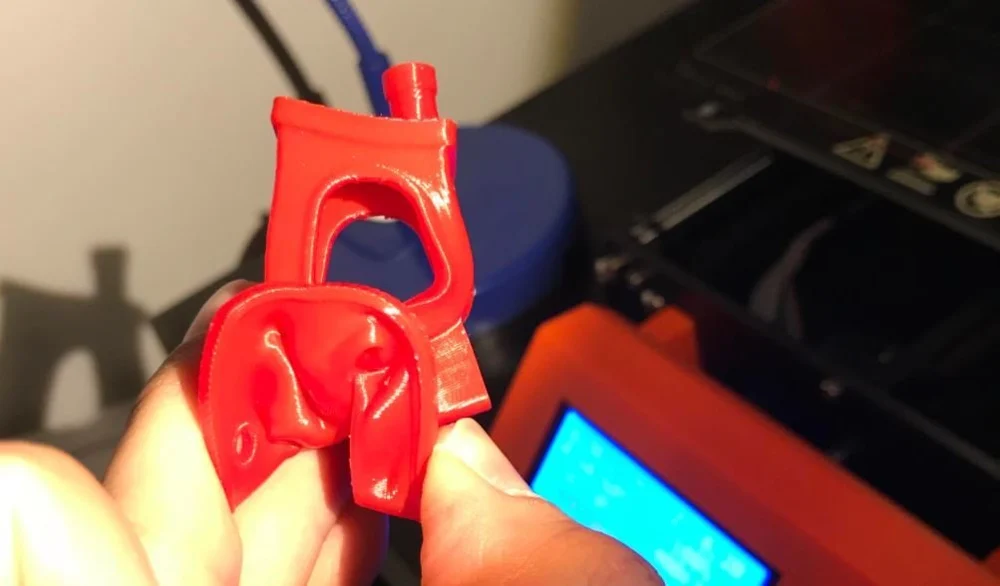
NinjaFlex filament is one of NinjaTek’s most popular filaments. With an 85A Shore hardness, it’s a flexible and fairly durable filament.
NinjaFlex can stretch up to 660% of its initial length before breaking, a property called elongation. In comparison, ABS’ elongation is measured at 6%. NinjaFlex also has 20% better abrasion-resistance than ABS and 68% more abrasion-resistance than regular PLA filament.
NinjaFlex’s flexible characteristics give it many possible applications for both personal and industrial projects. While NinjaTek states that it can be used to make rubber seals, one customer’s review contradicts this statement, noting that bad print settings can lead to ineffective seals that don’t function as they should. A more fitting application for this filament is vibration dampers, which can be used for feet on a 3D printer.
Many customers have found that NinjaFlex can be difficult to print due to slicer settings, and changes to temperature affect printing significantly. Other reviews have reported that finding the right settings is an experimental process that can be frustrating due to the sensitivity of the filament.
- Available colors: Steel, neon, water, flamingo, grass, midnight, snow, sapphire, fire, lava, sun
- Available sizes: 1.75 mm, 3 mm; 0.5 kg, 1 kg, 2 kg
- Nozzle temperature: 225-235 °C
- Bed temperature: Room temperature-40 °C
- Top and bottom print speed: 10-20 mm/s
- Infill and shell print speed: 15-35 mm/s
- Price per kg: $85
Armadillo
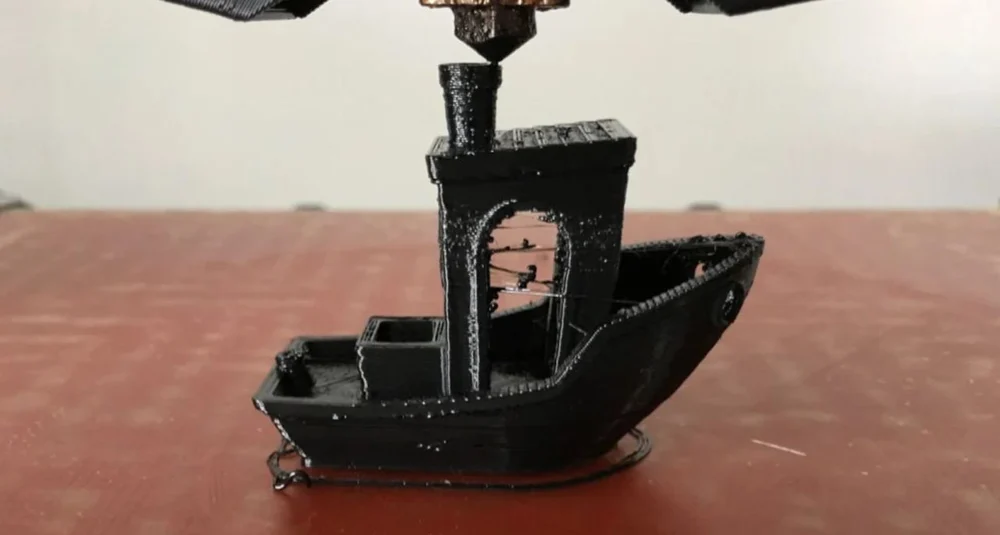
NinjaTek’s Armadillo filament is their rock, literally. This filament is extremely stiff and strong. With a 75D Shore hardness, this filament is on the less flexible but harder side of the spectrum. For reference, 80D is similar to a construction work hard hat. According to NinjaTek, Armadillo is 86 times tougher than ABS and 90% more resistant to abrasion than most nylon filaments.
Temperature-wise, Armadillo is printable with settings in between those of PLA and ABS. Armadillo’s relatively low printing temperature is surprising for a filament of its strength. It’s not necessary to heat the print bed, and the filament’s low printing temperatures make it accessible to printers with a weak hot end.
Armadillo’s strength makes it well suited for printing high-use, high-wear parts. You could use this filament to print drone parts (like landing gears), fasteners for assemblies, and protective covers. You could also use Armadillo to make linear bearings, hinges, or combs.
While Armadillo can be strong, printing doesn’t seem to be its strong suit. Many people have experienced stringing and issues with details on parts. One review by The Drone Files pointed out how Armadillo is extremely strong, but details don’t come out too well when printed. Other reviews also note how the filament is strong, but it can also be dimensionally inaccurate.
In our review of the filament, we experienced some stringing issues as well but found the printing process relatively smooth for a TPU.
- Available colors: Steel, water, grass, lava, sun, fire, sapphire, snow, midnight
- Available sizes: 1.75 mm, 3 mm; 0.5 kg, 1 kg, 2 kg
- Nozzle temperature: 220-230 °C
- Bed temperature: Room temperature-45 °C
- Top and bottom print speed: 15-20 mm/s
- Infill and shell print speed: 45-60 mm/s
- Price per kg: $85
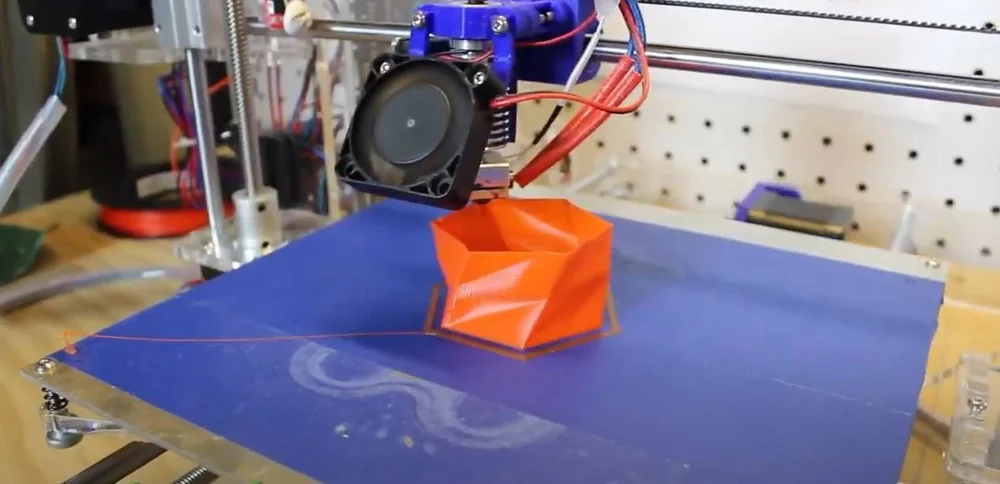
Cheetah was developed to be more user-friendly and to be printed at higher speeds, hence its name. You can print Cheetah at 60-80 mm/s, which is faster than you can print most PLA and ABS filaments, and significantly higher than TPU printing speeds, which are usually around 30 mm/s.
With a Shore hardness level of 95A, Cheetah is somewhat flexible but also stiffer in comparison to Ninjaflex. Capable of 580% elongation, this filament can withstand a lot of wear and tear. It’s also 40% more abrasion resistant than ABS and 76% more than PLA. On the ease-of-use front, Cheetah feeds into your extruder with less friction than usual, which helps to prevent nozzle jams as well as under-extrusion.
NinjaTek Cheetah’s ease of use and semi-flexible properties make it a great filament to print durable parts for fun projects. This could be snap-to-fit parts (like backpack fasteners) or other small, multi-part assemblies. You could also use Cheetah to print strong hinges with only a little “give” to them, or as suggested by Afinia 3D, RC car tires.
Reviews of NinjaTek’s Cheetah filament confirm the filament’s ease of use and overall durability. In one review, 3D Now found that the filament is easy to print, very user-friendly, and doesn’t jam the nozzle. Other users have expressed their appreciation of the filament, noting that it could be used for cell phone cases.
- Available colors: Steel, water, grass, lava, sun, fire, sapphire, snow, midnight
- Available sizes: 1.75 mm, 3 mm; 0.5 kg, 1 kg, 2 kg
- Nozzle temperature: 230-240 °C
- Bed temperature: Room temperature-40 °C
- Top and bottom print speed: 30-45 mm/s
- Infill and shell print speed: 60-80 mm/s
- Price per kg: $85
Eel

NinjaTek’s Eel filament is another unique NinjaTek filament that’s not only flexible but also electrically conductive. The filament could come in handy for small electronics projects, such as a sensor or a set of LEDs.
Eel can stretch up to 355% of its initial length before breaking. With a 90A Shore hardness, it’s about as hard as a skateboard wheel. Given its properties, the filament could also be used for anti-static grippers to safely handle electronic equipment.
Though NinjaTek Eel filament is advantageous for electronic projects, users have noted that it’s tricky during printing. Some have experienced failed prints despite adhering to the recommended print settings. Others have stated how the filament wraps around drive gears on the extruder, which is common for flexible filaments. In a review by 3DP Iceland, there was a lot of stringing during printing.
Many of these issues, however, can be fixed with a little trial and error. Stringing can be reduced with slicer settings, and there are plenty of tips from users about the wrapping issue. Check out our troubleshooting guide for a wide range of fixes for common 3D printing problems.
- Available color: Midnight
- Available sizes: 1.75 mm, 3 mm; 0.5 kg, 1 kg
- Nozzle temperature: 220-230 °C
- Bed temperature: Room temperature-45 °C
- Top and bottom print speed: 15-20 mm/s
- Infill and shell print speed: 45-60 mm/s
- Price per kg: $125
Source: https://all3dp.com/2/ninjatek-filament-ninjaflex-cheetah-armadillo/